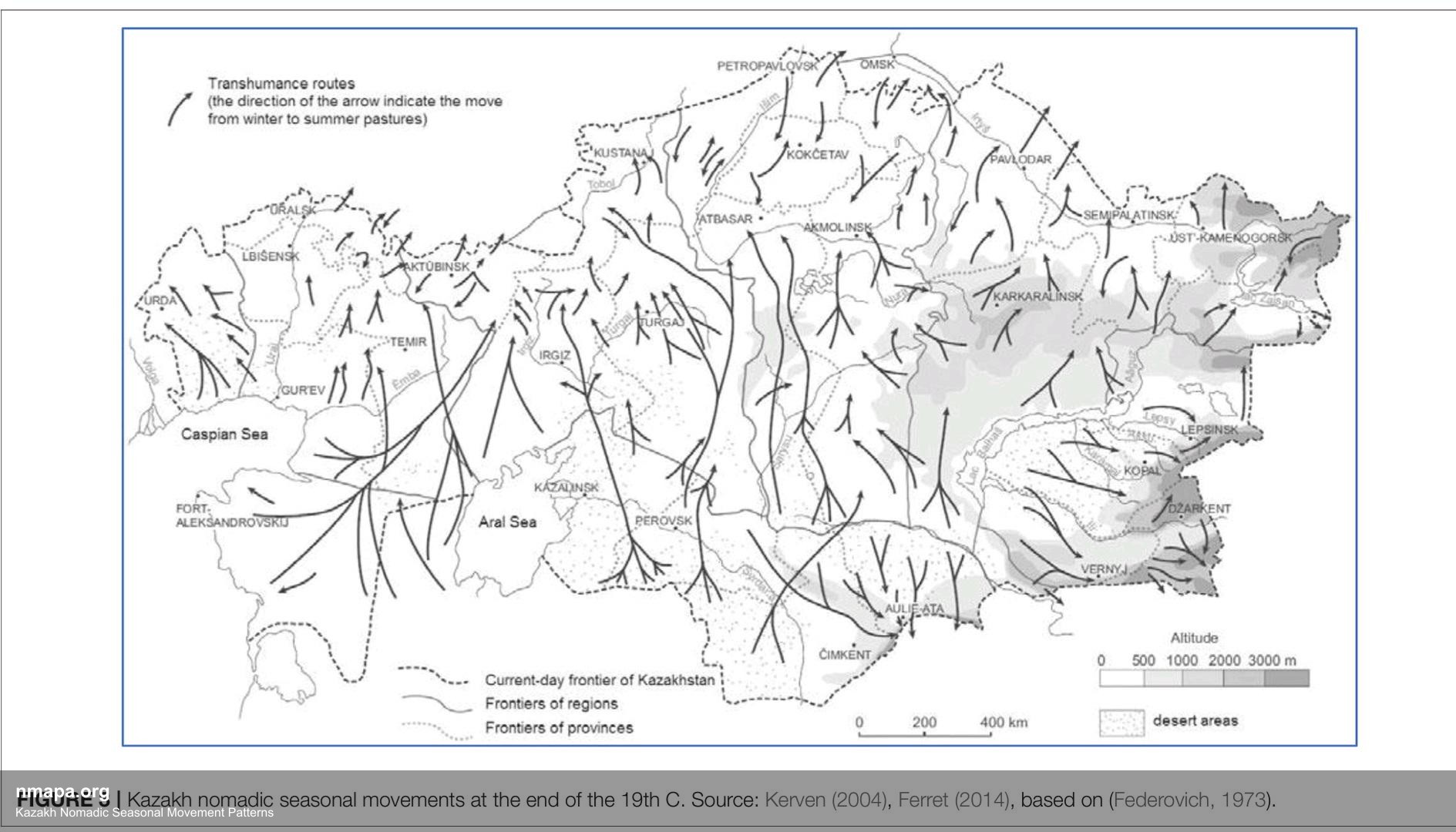Exploring the Kazakh Nomadic Seasonal Movement Patterns Map


David Chen
Data Visualization Specialist
David Chen is an expert in transforming complex geographic datasets into compelling visual narratives. He combines his background in computer science ...
Geographic Analysis
The Kazakh Nomadic Seasonal Movement Patterns Map is a captivating geographical visualization that illustrates the intricate seasonal migrations of nomadic tribes across the vast steppes of Kazakhstan. This map not only highlights the routes taken by these groups but also sheds light on the seasonal timings, the environmental factors influencing their movement, and the traditional territories they traverse. Through distinct color coding and symbols, viewers can easily discern the different paths and the specific time periods associated with each movement.
Geographically, the significance of this visualization lies in its ability to represent the dynamic relationship between the nomadic tribes and their environment. Kazakhstan, with its diverse landscapes ranging from arid deserts to lush pastures, provides the backdrop for these seasonal migrations. The map serves as a reminder of how natural resources, such as water sources and grazing lands, dictate the patterns of human movement and settlement. Understanding these connections is crucial for grasping the ecological balance and sustainability practices of nomadic lifestyles.
Delving into the historical and cultural context, the nomadic tribes of Kazakhstan, primarily the Kazakhs, have practiced seasonal migration for centuries. This way of life is deeply rooted in their history and is tied to their pastoral traditions. The movement patterns are not merely a means of survival but are also woven into the cultural fabric of Kazakh identity. Festivals, rituals, and social gatherings often coincide with these migrations, reinforcing community bonds and cultural heritage. The map thus serves as a cultural artifact, showcasing how geography and culture interlink.
Regional patterns observed in the Kazakh Nomadic Seasonal Movement Patterns Map reveal the adaptability of these tribes to the changing climates and landscapes of Kazakhstan. For instance, during the summer months, nomads typically migrate to higher pastures in the mountains, while in winter, they descend to the valleys where milder conditions prevail. This cyclical movement reflects a sophisticated understanding of environmental cues and demonstrates resilience in the face of ecological challenges. Moreover, the map can depict the impact of modernity and climate change on traditional migration routes, offering insights into how these factors disrupt age-old practices.
The educational value of this visualization extends beyond the realm of geography; it offers viewers a window into anthropological studies, environmental science, and cultural preservation. Students and researchers can glean insights into how nomadic lifestyles contribute to biodiversity and sustainable land management. By understanding the seasonal patterns of these tribes, one can appreciate the delicate balance between human activity and environmental stewardship.
This type of geographical visualization aids in the comprehension of broader geographical concepts such as migration, resource management, and cultural geography. It exemplifies the intricate ways in which humans adapt to their environment and highlights the significance of traditional ecological knowledge. In a world increasingly influenced by globalization, understanding such indigenous practices becomes paramount for fostering respect and collaboration between different cultures.
In conclusion, the Kazakh Nomadic Seasonal Movement Patterns Map is not just a representation of physical routes; it encapsulates the essence of a way of life that reflects the interplay between people and the land. By engaging with this visualization, viewers can deepen their understanding of geography, history, and cultural identity, fostering a greater appreciation for the rich tapestry of human experience across different landscapes.
This map serves as a vital educational tool, encouraging further exploration of the fascinating world of nomadic cultures and their enduring relationship with the environment.
Visualization Details
- Published
- August 1, 2025
- Views
- 88
Comments
Loading comments...